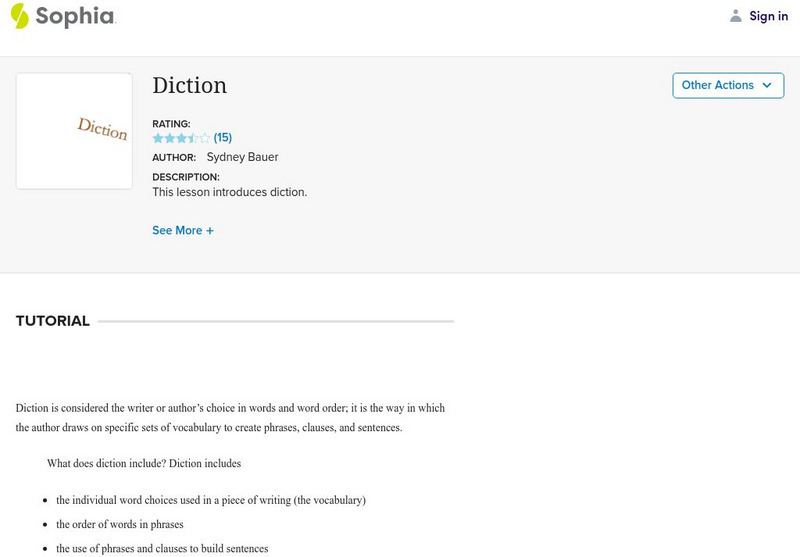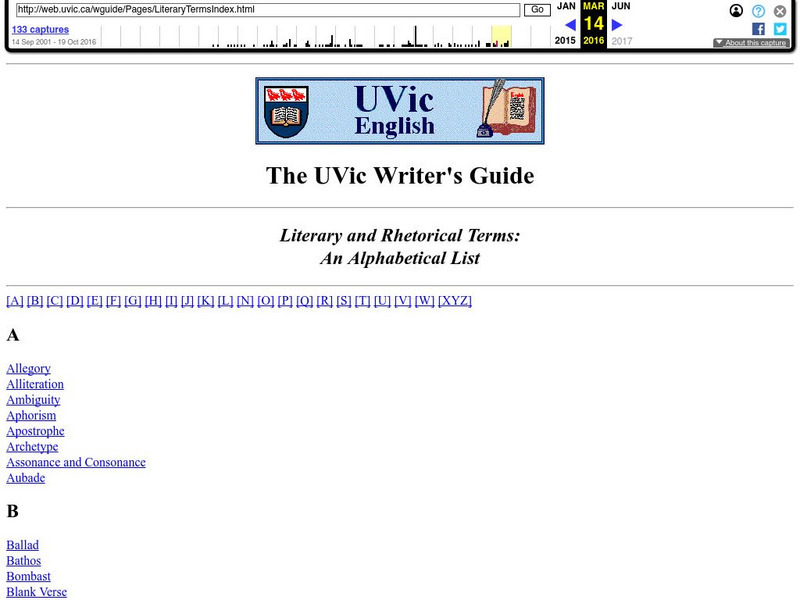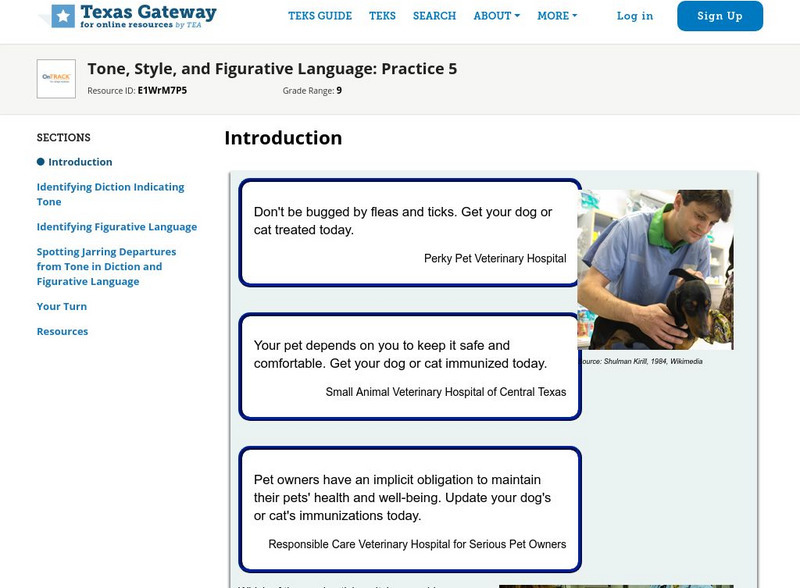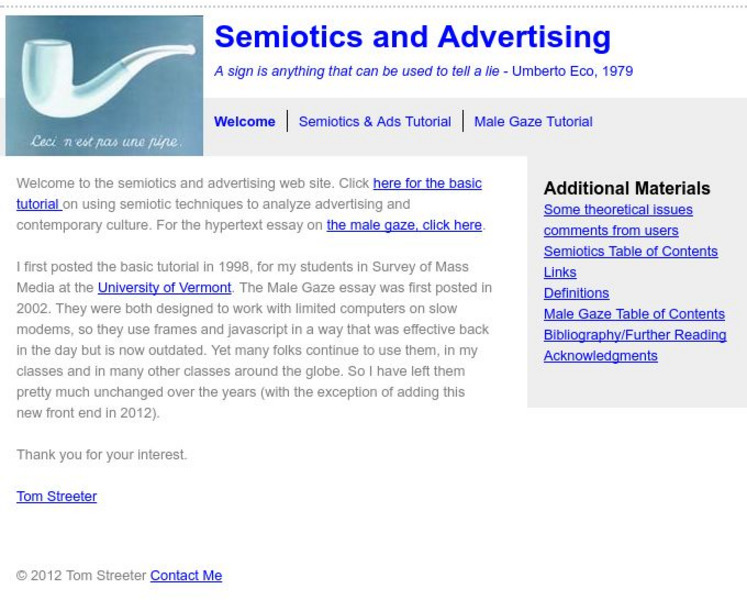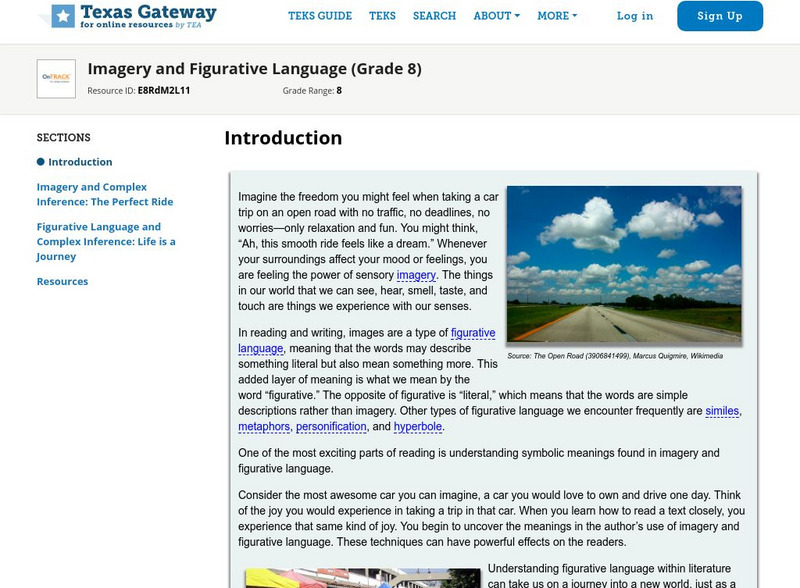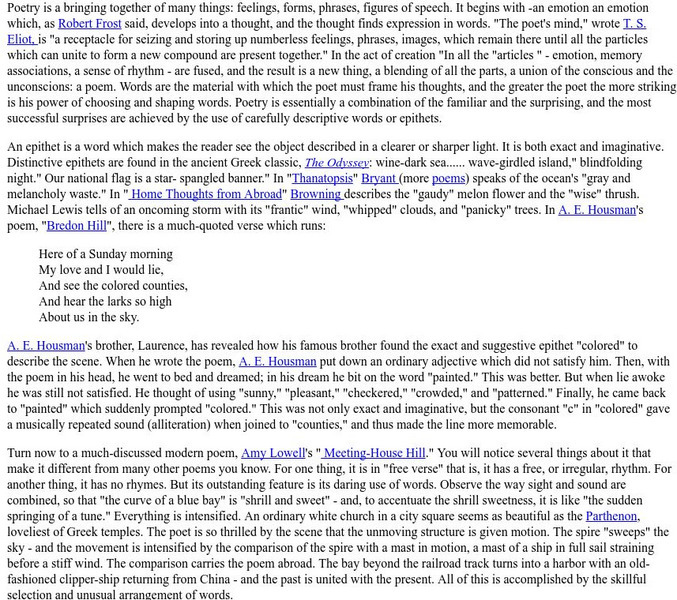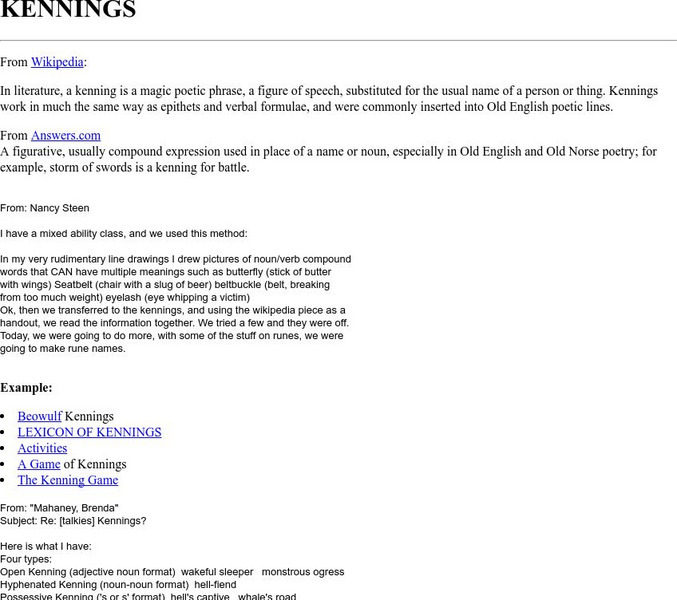Sophia Learning
Sophia: Diction
This lesson uses text and an accompanying audio to discuss diction including its definition, what it includes, and an explanation and an example of how word choice, word order, and phrasing can change the tone of writing.
University of Victoria (Canada)
U Vic Writer's Guide: Literary and Rhetorical Terms: An Alphabetical List
This is an alphabetical list of literary and rhetorical terms; each includes a definition and examples.
Texas Education Agency
Texas Gateway: Tone, Style, and Figurative Language: Practice 5
Mark examples of figurative language and the diction that indicate tone.
Other
Streeter: Semiotics and Advertising
A slide show that offers a good study of connotation and how it refers to semiotics. Symbols are not the things they represent. L.11-12.5b Nuance
Texas Education Agency
Texas Gateway: Diction and Tone (English Ii Reading)
This lesson will help students identify diction and tone in their reading and will help them answer these questions: What does the author mean? What is the author's attitude about what he or she is writing? How will my understanding of a...
Texas Education Agency
Texas Gateway: Diction and Tone (English Iii Reading)
[Accessible by TX Educators. Free Registration/Login Required] In this lesson, students will learn how to find the tone in a passage using a close reading strategy. They will also look at diction and discover that examining a writer's...
Texas Education Agency
Texas Gateway: Imagery and Figurative Language (Grade 8)
In this lesson, students learn how to make complex inferences and use textual evidence such as imagery and figurative language to support understanding.
Texas Education Agency
Texas Gateway: Imagery and Figurative Language (Grade 6)
This lesson focuses on the use of imagery and figurative language in writing to aid understanding and create images in the mind.
Texas Education Agency
Texas Gateway: Importance of Figurative Language: Practice 3 (English I Reading)
This practice activity focuses on identifying figurative language, determining literal from figurative language, and connecting figurative language to settings. L.9-10.5 Fig Lang/nuances
Texas Education Agency
Texas Gateway: Simile and Metaphor (English Iii Reading)
You will be able to identify the similes and metaphors in a text and evaluate their importance to the meaning of the text. W.11-12.2d Lang/Fig/Voc
Texas Education Agency
Texas Gateway: Analyze Use of Stylistic a Rhetorical Details
[Accessible by TX Educators. Free Registration/Login Required] In this lesson, you are going to learn to comment on writing composed by writers who are aesthetic types, writers who use language to bring images to our minds as we read....
Texas Education Agency
Texas Gateway: Literary Terminology: Practice 5 (English I Reading)
[Accessible by TX Educators. Free Registration/Login Required] To be "in the know" in literature, you need to know the terminology used to describe, interpret, and analyze poetry, drama, and fiction. As you proceed through the sections...
Texas Education Agency
Texas Gateway: Tone, Style, and Figurative Language: Practice 5
A learning module that teaches students about tone, style, and figurative language in five mini-lessons: Introduction, Identifying Diction Indicating Tone, Identifying Figurative Language, Spotting Jarring Departures from Tone in Diction...
Georgia Department of Education
Ga Virtual Learning: The Elements of Poetry [Pdf]
This is a 2-page PDF of a chart that lists eight elements of poetry, questions to ask concerning each element, and tips and explanations to aid the understanding of each element. RL.9-10.5 text structure effects
Curated OER
Neh: Edsit Ement: Walt Whitman's Notebooks and Poetry: The Sweep of the Universe
For this lesson plan, students will consider "Walt Whitman's Notebooks and Poetry: The Sweep of the Universe." The plan includes worksheets and other student materials that can be found under the resource tab.
Ted Nellen
Cyber English (By Ted Nellen): Alliteration
This site fully explores the term "alliteration." Content includes a definition, examples in literature, and a look at why and how it has been used throughout literary history.
Ted Nellen
Cyber English (By Ted Nellen): Analogy
This is a glossary entry for the term "Analogy" including the definition, an example, and links to more information.
Ted Nellen
Cyber English (By Ted Nellen): Asyndeton
This is a glossary entry for the term "Asyndeton" including definitions, an example, and links to more information.
Ted Nellen
Cyber English (By Ted Nellen): Chiasmus
This is a glossary entry for the term "Chiasmus" including a definition and examples.
Ted Nellen
Cyber English (By Ted Nellen): Epithet
This is a glossary entry for the term "Epithet" including definitions and examples from a number of poets.
Ted Nellen
Cyber English (By Ted Nellen): Kennings
This is a glossary entry for the term "Kennings" including multiple definitions and examples including links to more examples.
Ted Nellen
Cyber English (By Ted Nellen): Personification
This is a glossary entry for the term "Personification" including a defintion and two literary examples.
Ted Nellen
Cyber English (By Ted Nellen): Simile
This is a glossary entry for the term "Simile" including a definition and examples in a cartoon and in literary works. Links are provided to more information and examples.
Ted Nellen
Cyber English (By Ted Nellen): Syllepsis
This is a glossary entry for the term "Syllepsis" including definitions and links to more information and examples.


